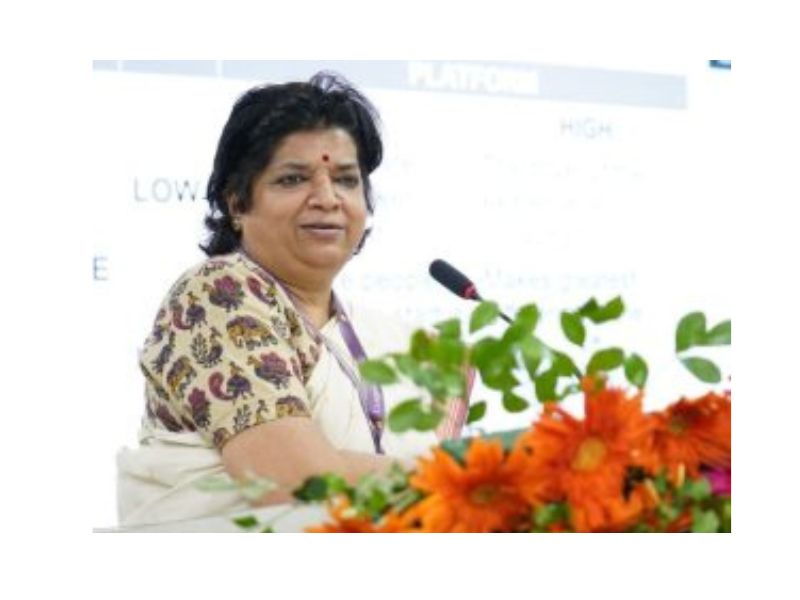No products in the cart.
India’s Higher Education Needs a Skill-First Reset
Dr (Prof) Supriya Pattanayak, Vice Chancellor, Centurion University of Technology and Management, Odisha
India, now home to the world’s largest population, is experiencing a demographic shift that brings both promise and urgency. Approximately 65% of the population is under the age of 35, forming a vast youth base that represents not just the nation’s present—but its future.
A majority of this young population consists of students—eager to learn, ready to take risks in their careers, and prepared to earn a livelihood. Yet the challenge lies in ensuring they are employable in a fast-evolving world.
According to the Graduate Skill Index (India), only 42.6% of Indian university graduates are expected to be employable in 2025, marking a decline from 44.3% in 2023. Alarmingly, even non-technical fields such as marketing, sales, human resources, and business development witnessed a 43.5% employability rate, a steep fall from 48.3% in 2023.
This is not merely the result of artificial intelligence or automation. The root causes lie deeper—in gaps within the education system, insufficient non-technical training, and sluggish hiring trends, especially in key sectors like IT.
Why Universities Must Rethink Education—Now
To remain relevant, Indian universities must align their education systems with the demands of a dynamic global workforce. This requires a shift from theory-heavy curricula to a skill-first, industry-aligned model that prepares students for real-world challenges.
Rather than spending another six months to a year training fresh graduates on the job, employers would benefit from a new breed of candidates—students already equipped with practical knowledge, hands-on skills, and an understanding of industry workflows.
Bridging the Gap with Real-World Learning Environments
Universities must invest in production centres and action learning labs that mirror real industrial settings. When students interact with actual tools and processes, they gain the confidence to solve problems creatively and independently.
Collaborations between universities and industries can also lead to the creation of manufacturing labs, where students get practical exposure to operational models, workflows, and innovation. While this may seem resource-intensive, the long-term benefits are clear—and align with the goals of the National Education Policy (NEP) 2020, which advocates for vocational training, practical education, and transdisciplinary learning.
Work, Earn, and Learn: A Parallel Path for Financially Constrained Students
Another vital aspect of reform lies in supporting students who cannot afford to pursue regular full-time education. We must create flexible learning ecosystems where students can study, work, and earn simultaneously.
This can be achieved through co-designed curriculums involving both academia and industry. Students follow a schedule that accommodates work commitments while earning industry-recognised certifications—such as those under the NSQF (National Skills Qualifications Framework)—by the time they graduate. These real-world learning experiences go far beyond the limited scope of traditional internships.
Diplomas and Credit-Based Entry: Flexible Routes to a Degree
Skill-integrated diploma programmes are a great option for students who wish to specialise in specific sectors. Within one to two years, students are job-ready and aligned with the principles of Industry 5.0. Later, if they wish to pursue a full-fledged undergraduate degree, their credits can be transferred—ensuring that time and effort are not wasted.
This credit-based model encourages lateral entry and re-entry, allowing students to pause and resume their education according to their personal and financial circumstances. Ultimately, it enables students to chart their own journey—up to postgraduate and PhD levels—at a pace that suits them.
Fostering Entrepreneurial Mindsets
Beyond employability, universities must nurture a spirit of entrepreneurship. In doing so, they transform students from job seekers into job creators, thereby amplifying employment opportunities for others.
India’s future depends not only on equipping young minds with skills but also on cultivating visionaries, innovators, and leaders. With the right mindset, tools, and educational reforms, we can reshape the higher education landscape and unlock the full potential of our youth.
India stands at a critical crossroads. Its youthful population presents a massive opportunity—but only if matched with a future-forward, skill-based education model.
By embracing this transformation today, universities can ensure students are not only employable but also empowered to thrive, innovate, and lead in the rapidly changing world of tomorrow.
Also Read: How to integrate skill learning into higher education curriculum















Add comment